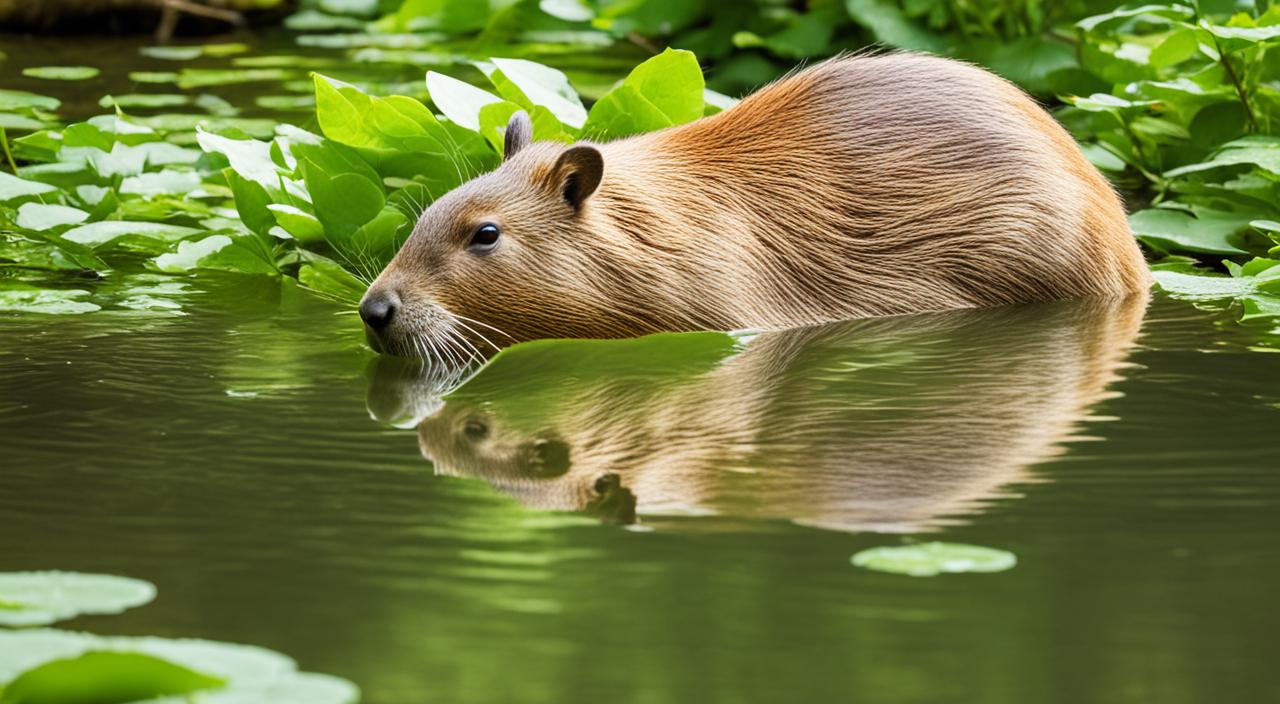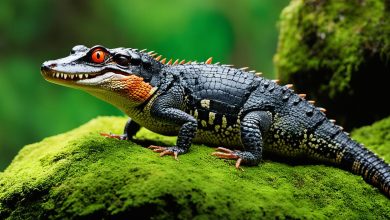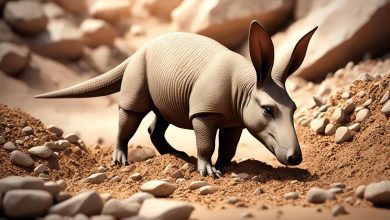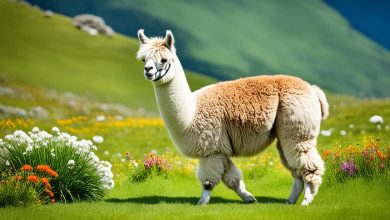South American wildlife holds many wonders, including the gentle giants of the rodent world – capybaras. These remarkable creatures inspire fascination with their size and unique traits. As the largest living rodents, capybaras leave a lasting impression on those who encounter them.
Capybaras, or Hydrochoerus hydrochaeris, are truly impressive animals. They can grow up to 134 cm (4.40 ft) long and weigh 66 kg (146 lb) on average. The largest wild female capybara from Brazil weighed an astounding 91 kg (201 lb)!
These social creatures are native to South America. During dry seasons, their groups can grow to 100 members. Capybaras are comfortable both on land and in water.
They can hold their breath underwater for up to five minutes. This skill helps them escape predators like jaguars, pumas, and anacondas. Their adaptability is key to their survival.
Capybaras face many dangers in the wild. Their average lifespan is only four years due to predation. However, these rodents continue to thrive thanks to their social structure and adaptability.
From their plant-based diet to their unique sounds, capybaras never fail to amaze researchers. Their resilience and interesting traits make them a fascinating subject of study.
Introduction to the Capybara
Capybaras are the world’s largest rodents. These semi-aquatic mammals live in South America. Their unique traits and social behavior fascinate animal lovers.
What is a Capybara?
Capybaras are big, sturdy rodents with impressive sizes. They can grow up to 50 cm (1.6 ft) tall at the shoulder. Their weight ranges from 27 to 79 kg (59.5 to 174.2 lbs).
Capybaras have barrel-shaped bodies and webbed feet. These features help them thrive in their semi-aquatic habitats.
Scientific Classification
Capybaras belong to the family Caviidae and genus Hydrochoerus. Their scientific name is Hydrochoerus hydrochaeris. This name highlights their close ties to water habitats.
Geographic Distribution
Capybaras live across South America in countries like Brazil, Peru, and Argentina. They prefer areas near water, such as marshes, estuaries, rivers, and streams.
Interestingly, capybaras have been spotted in Florida. This suggests they might be breeding outside their native range.
| Characteristic | Description |
|---|---|
| Size | Up to 130 cm (4.3 ft) in length |
| Weight | 27-79 kg (59.5-174.2 lbs) |
| Lifespan | 8-12 years |
| Habitat | Near water bodies in South America |
| Conservation Status | Least Concern (IUCN) |
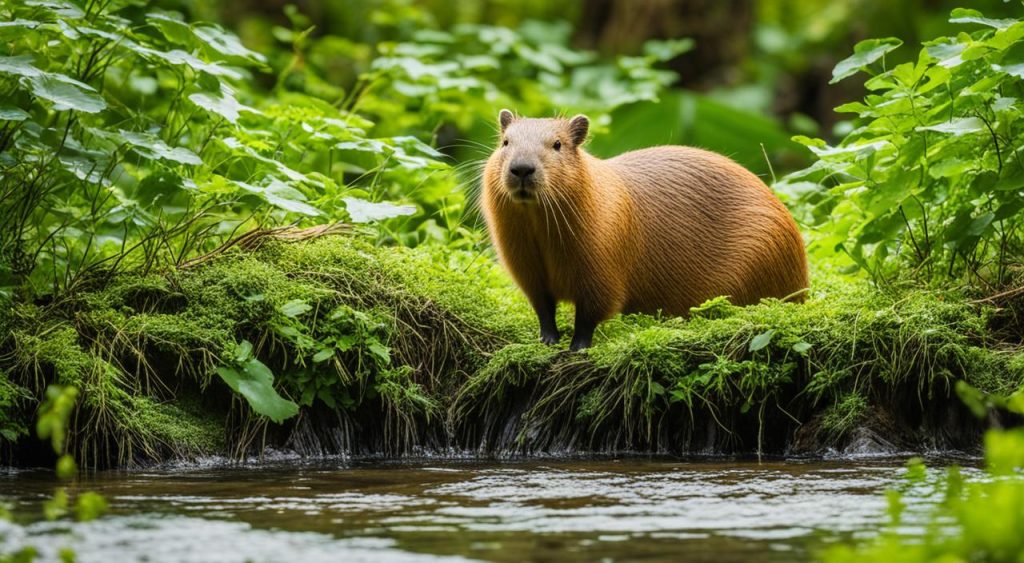
Physical Characteristics of Capybaras
Capybaras are the largest living rodents. These semi-aquatic mammals have unique physical traits. They measure 39 to 51 inches long and stand about 20 inches tall at the shoulder.
Their bodies are barrel-shaped with coarse fur. The top is reddish-brown, while the underside is yellowish-brown. Capybaras weigh between 60 to 174 pounds, with females often heavier than males.
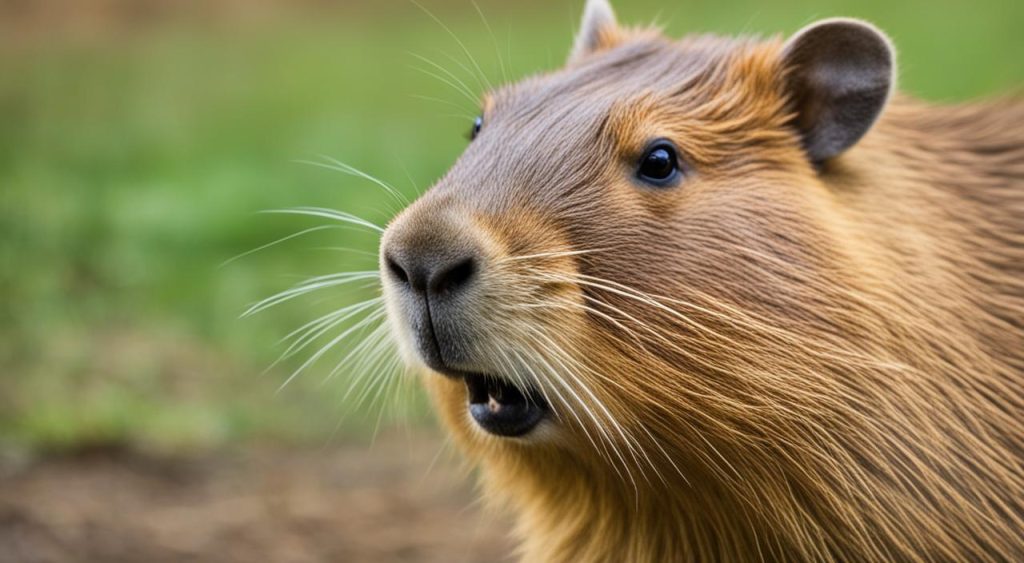
Capybaras have adapted well to their semi-aquatic lifestyle. They have webbed feet for efficient swimming. Their eyes, ears, and nostrils sit near the top of their heads.
This positioning allows them to stay mostly underwater. They can remain aware of their surroundings while submerged. These features help them survive in their natural habitat.
| Feature | Description |
|---|---|
| Body Length | 39-51 inches (100-130 cm) |
| Shoulder Height | 20 inches (50 cm) |
| Weight | 60-174 lbs (27-79 kg) |
| Fur Color | Reddish-brown (top), Yellowish-brown (bottom) |
| Distinctive Features | Webbed feet, High-positioned sensory organs |
Capybaras have a blunt muzzle and a tiny tail. Their teeth include sharp incisors and strong molars. This dental structure suits their plant-based diet perfectly.
These impressive eaters can consume up to 8 pounds of fresh grass daily. Their eating habits reflect their size and energy needs.
Habitat and Adaptation
Capybaras are unique semi-aquatic mammals from South America. They thrive in various wetland ecosystems. These amazing animals have adapted to a lifestyle that combines land and water.
Semi-Aquatic Lifestyle
Capybaras are expert swimmers who can hold their breath for five minutes underwater. This skill helps them escape danger and find food. Their webbed feet make them agile in water.
Preferred Ecosystems
These rodents live in many water-rich areas across South America. They do well in rainforests, swamps, marshes, and flooded grasslands. Capybaras also adapt to human-altered landscapes, often living on cattle ranches.
In high-density populations, their home ranges average 10 hectares. This shows their ability to thrive in different environments.
Adaptations for Wetland Living
Capybaras have special features for their semi-aquatic life. Their eyes, ears, and nostrils are high on their heads. This lets them stay alert while mostly underwater.
“Capybaras are nature’s perfect amphibious rodents, equally at home on land and in water.”
These adaptations help capybaras succeed in wetlands. They play a key role in their ecosystems. As the world’s largest rodents, they can weigh 66 kg and measure 1.2 meters long.
Capybara Social Behavior
Capybaras live in groups called herds. These herds change in size based on the season and environment. Their social life is rich and complex.
Dry season herds can have up to 100 capybaras. Wet season groups are smaller, with about 40 members. This helps them adapt to changing food and water supplies.
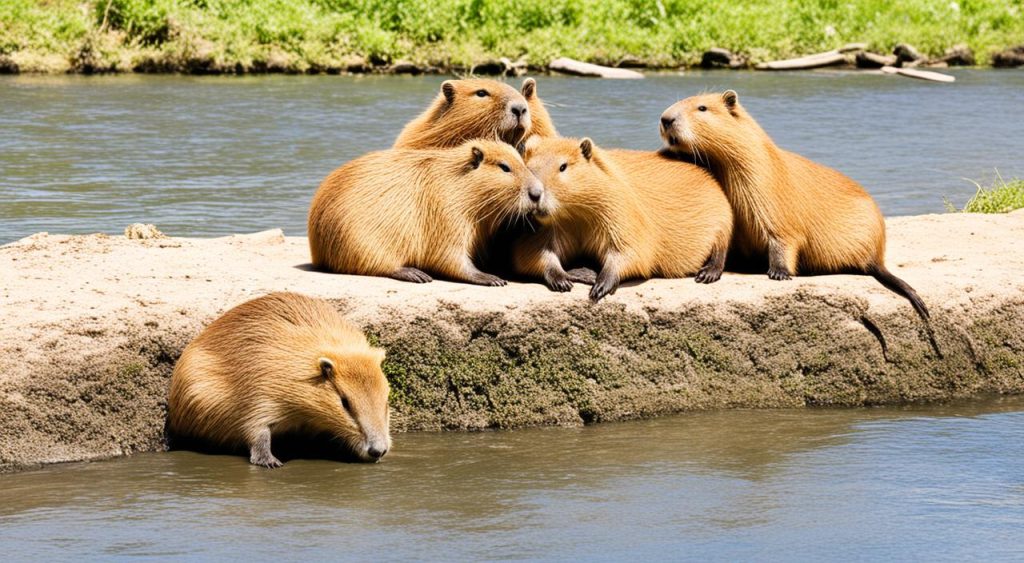
A typical herd has 6 to 16 adult capybaras. Top males create harems with 4 to 14 females. These groups live in areas from 2 to 200 hectares.
Capybaras use sounds to talk to each other. They purr, whistle, grunt, and bark for different reasons. Male rank is shown by the size of their scent gland.
| Season | Group Size | Territory Size |
|---|---|---|
| Dry | Up to 100 | 2-200 hectares |
| Wet | Up to 40 | 5-20 hectares (average) |
Capybaras have a high population density compared to similar animals. Their biomass is ten times greater than other grazing animals their size. This reflects the rich food sources in their savanna homes.
Diet and Feeding Habits
Capybaras are the world’s largest rodents and strict herbivores. They live on grassy plains and eat only plants. This makes them vital to their ecosystems.
Herbivorous Nature
Wild capybaras mainly eat grasses and water plants. They love Bermuda grass and Panic grass the most. These make up most of their diet.
When available, they also enjoy water hyacinths and water lettuce. Their plant-only diet shapes their role in nature.
Preferred Plant Species
Capybaras have a wide-ranging diet. They eat:
- Grasses (Bermuda, Panic)
- Aquatic plants (water hyacinths, water lettuce)
- Fruits and vegetables (squashes, melons, seasonal fruits)
- Tree bark and young shoots (during dry seasons)
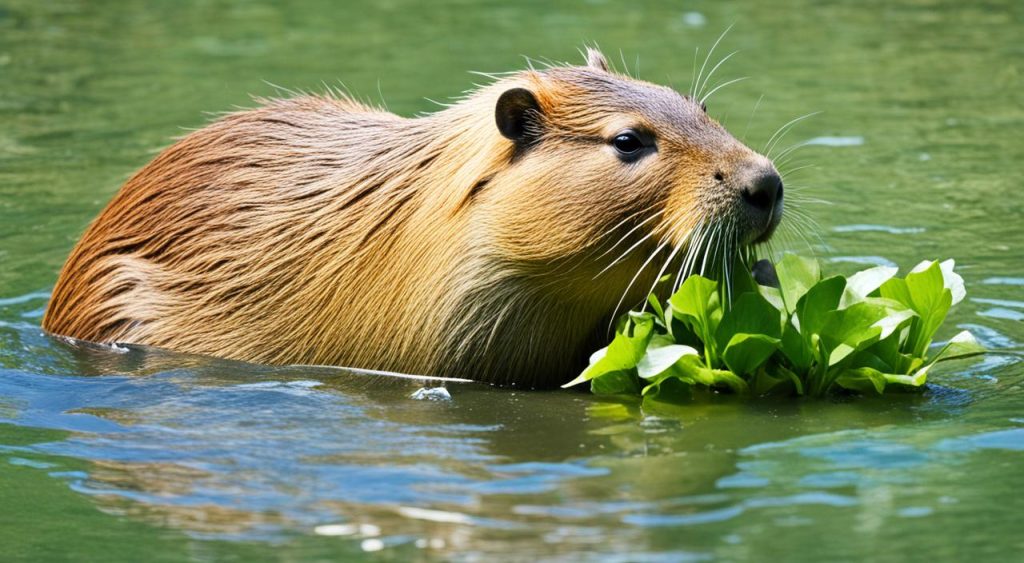
Feeding Patterns
These plains dwellers are active during the day. They graze mostly in early morning and late afternoon. Capybaras eat their own poop to get more nutrients.
This habit helps keep their gut healthy. It also lets them get more goodness from their plant-based meals.
| Diet Component | Wild Capybaras | Captive Capybaras |
|---|---|---|
| Main Food | Grasses, Aquatic Plants | High-fiber Pellets |
| Supplements | Fruits, Tree Bark | Fresh Vegetables, Occasional Fruits |
| Health Concerns | Seasonal Food Scarcity | Obesity Risk |
Reproduction and Life Cycle
Capybaras, South America’s social herd animals, have an intriguing reproductive cycle. Female capybaras enter estrus every 7.5 days. However, they’re only receptive for 8 hours, making timing crucial for successful mating.
Capybara pregnancies last about 150 days. They usually have one litter yearly, but can have two in good conditions. A typical litter has 4 to 5 pups.
A breeding group may welcome up to 15 pups at once. Newborns weigh around 1,500 grams (3.3 lbs) at birth. They grow fast, reaching sexual maturity at about 15 months.
Adult capybaras weigh between 30 kg and 70 kg. Females are slightly heavier than males. In the wild, capybaras live 7-10 years.
In managed care, males live about 7.1 years and females 8.6 years. Despite their short lives, these social creatures greatly impact their ecosystems.
“Capybaras are nature’s testament to the power of social living. Their unique reproductive strategies and life cycles are finely tuned to their environment.”
Capybaras’ life cycles show their importance in South American wetlands. Their social nature and adaptability highlight these gentle giants’ resilience. Learning about capybaras helps us value these remarkable rodents.
Capybara: The World’s Largest Rodent
Capybaras are the biggest rodents alive today. These amazing animals are much larger than other rodents. They have special features that make them unique in the animal world.
Size Comparison with Other Rodents
Capybaras are huge compared to other rodents. They can weigh up to 150 pounds and grow 4.4 feet long. This makes them almost twice as big as North American beavers.
| Animal | Weight (lbs) | Length (feet) |
|---|---|---|
| Capybara | 75-150 | 3.5-4.4 |
| North American Beaver | 35-65 | 2.5-3 |
| Nutria | 15-22 | 1.5-2 |
Evolutionary Factors
Capybaras evolved to be big for good reasons. Their size helps them swim and move on land easily. It also protects them from animals that might try to eat them.
Impact on Ecosystem
Capybaras are important in their environment. Large predators like jaguars and caimans eat them. This helps keep the food chain balanced.
These giant rodents eat a lot of grass every day. Their eating habits change the plants around them. This affects the health of their whole habitat.
Conservation Status and Threats
Capybaras, iconic South American wildlife, have a stable conservation status. The IUCN Red List classifies them as “Least Concern.” This means capybaras aren’t facing immediate extinction risks globally.
However, these large rodents face challenges in their natural habitats. Deforestation and habitat destruction are major threats to capybaras. Illegal poaching also impacts their populations in some regions.
Capybara populations vary across their range. They’re common in the Amazon but rare in heavily populated areas. These semi-aquatic mammals typically live in small groups of about 10 individuals.
Herd sizes can range from just a couple to up to 30 animals. Their social structure helps them survive in diverse habitats.
| Conservation Factor | Status |
|---|---|
| IUCN Red List Category | Least Concern |
| Population Trend | Stable |
| Main Threats | Deforestation, Habitat Loss, Poaching |
| Last Assessment Date | March 2016 |
Ongoing conservation efforts are vital to maintain capybara populations. Regular IUCN assessments help monitor their status. Future updates will provide insights into this fascinating species’ long-term prospects.
Capybaras in Human Culture
Capybaras, South America’s gentle giants, have won hearts worldwide. These social creatures have become internet stars. On TikTok, ‘capybara’ videos have over 116 million views.
Capybaras charm with their guinea pig cuteness and pig-like features. Their calm nature and friendliness with other animals make them social media favorites. Instagram accounts showcasing these oversized rodents are gaining popularity fast.
Capybaras also play roles in local cultures. Some regions hunt them for meat. Others keep them as exotic pets. Their presence in cities creates unique human-wildlife interactions.
Sometimes, capybaras cause traffic jams or claim unexpected territories. Despite these challenges, their lovable nature keeps winning fans globally.
FAQ
What is a capybara?
Capybaras are the largest living rodents native to South America. They belong to the Hydrochoerus genus. These animals are closely related to guinea pigs and rock cavies.
Where are capybaras found?
Capybaras live throughout South America, except in Chile. They prefer densely forested areas near water bodies. Their habitats include lakes, rivers, swamps, ponds, marshes, and flooded savannas.
What are the physical characteristics of capybaras?
Capybaras have heavy, barrel-shaped bodies and short heads. Their fur is reddish-brown on top and yellowish-brown underneath. Adult capybaras grow 106-134 cm long and stand 50-62 cm tall.
They typically weigh 35-66 kg, with females being slightly heavier.
How are capybaras adapted to their semi-aquatic lifestyle?
Capybaras have webbed feet for efficient swimming. Their eyes, nose, and ears are high on their heads. This positioning allows them to survey their surroundings while in water.
These animals can hold their breath underwater for up to five minutes.
Are capybaras social animals?
Yes, capybaras are highly social creatures. They typically live in groups of 10-20 individuals. During dry seasons, these groups can expand to 50-100 members.
Capybaras have a social structure with dominance hierarchies. They communicate through various vocalizations and scent glands.
What do capybaras eat?
Capybaras are herbivores, mainly grazing on grasses and aquatic plants. They also eat fruit and tree bark. These animals practice autocoprophagy, eating their own feces.
This behavior helps them extract maximum nutrients and maintain gut flora.
How big are capybaras compared to other rodents?
Capybaras are the largest living rodents, almost twice the size of North American beavers. They weigh between 35-66 kg. Some individuals can reach up to 91 kg.
What is the conservation status of capybaras?
Capybaras are listed as Least Concern on the IUCN Red List. However, they face threats from habitat loss and hunting. Predators like jaguars, pumas, and caimans also pose risks.
How are capybaras significant in human culture?
In Venezuela, people eat capybara meat during Lent. A historical Papal Bull declared them as “fish” for dietary purposes. Capybaras are popular in zoos and as exotic pets in some regions.
They’ve gained internet fame for their relaxed nature.
